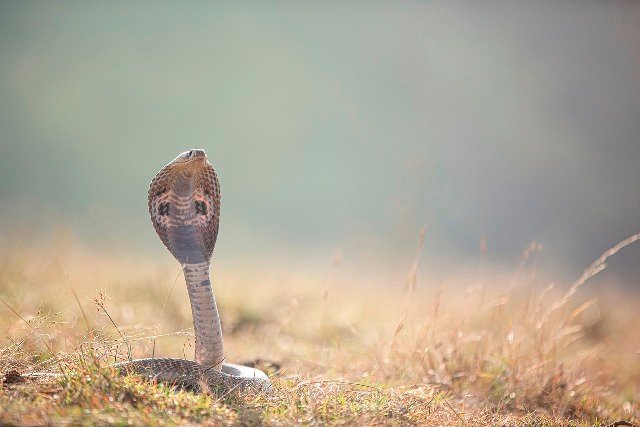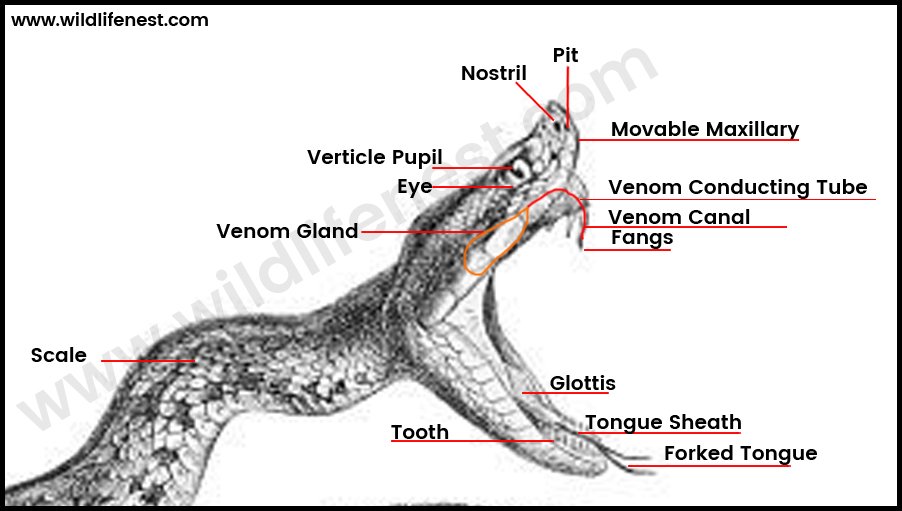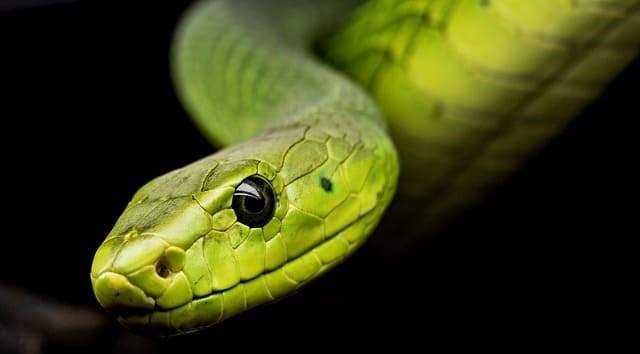The Ultimate Guide to Snakes

What is a Snake?
Snakes are fascinating and diverse reptiles that belong to the suborder Serpentes. They are found on every continent except Antarctica and in a wide range of habitats, from deserts and forests to oceans and swamps. Here’s a comprehensive overview of what defines a snake:
Physical Characteristics
- Body Structure: Snakes are elongated, legless reptiles with a flexible body. Their bodies are covered in scales that can vary in texture and color.
- Size: Snakes vary greatly in size, from the tiny thread snake, which is about 10 cm (4 inches) long, to the massive reticulated python, which can exceed 6 meters (20 feet).
- Skeleton: Snakes have a unique skeletal structure with a highly flexible spine made up of numerous vertebrae. They lack limbs, eyelids, and external ears.
Sensory Abilities
- Vision: Snake vision varies by species. Some snakes have excellent eyesight, while others rely more on other senses.
- Smell: Snakes use their forked tongues to collect scent particles from the air and ground, transferring them to the Jacobson’s organ in the roof of their mouth to detect prey and navigate their environment.
- Heat Detection: Some snakes, like pit vipers, pythons, and boas, have specialized heat-sensing pits on their faces to detect warm-blooded prey.
Behavior and Ecology
- Diet: Snakes are carnivorous and consume a variety of prey, including rodents, birds, amphibians, fish, and other reptiles. They swallow their prey whole, often using venom or constriction to subdue it.
- Reproduction: Snakes reproduce by laying eggs (oviparous) or giving birth to live young (viviparous). Clutch size and gestation periods vary widely among species.
- Movement: Snakes move by using their muscles to push against surfaces in a coordinated manner. They can slither, climb, swim, and even glide.
At WildlifeNest.com, we aim to provide in-depth information about wildlife, focusing on snakes. Snakes are categorized into three groups based on their venom potency: highly venomous, semi-venomous, and non-venomous.
Non-Venomous Snakes: An Overview
Number of Non-Venomous Snake Species
- Estimated Number: Out of approximately 3,000 known snake species, around 2,100 are considered non-venomous. This means about 70% of all snake species are non-venomous.
Worldwide Appearance
- Distribution: Non-venomous snakes are found in diverse habitats across the globe, including forests, grasslands, wetlands, deserts, and urban areas. They inhabit every continent except Antarctica.
Common Non-Venomous Snakes
Here are some common non-venomous snakes found worldwide:
| Snake Name | Scientific Name | Region |
|---|---|---|
| Common Garter Snake | Thamnophis sirtalis | North America |
| Ball Python | Python regius | West and Central Africa |
| Corn Snake | Pantherophis guttatus | North America |
| Eastern Rat Snake | Pantherophis alleghaniensis | Eastern United States |
| Green Tree Python | Morelia viridis | New Guinea, Indonesia, Australia |
| Kingsnake | Lampropeltis spp. | North and South America |
| Milk Snake | Lampropeltis triangulum | North and South America |
| Boa Constrictor | Boa constrictor | Central and South America |
| Indian Rock Python | Python molurus | Indian Subcontinent |
| African Rock Python | Python sebae | Sub-Saharan Africa |
Non-venomous snakes make up the majority of snake species, with around 2,100 species found worldwide. These snakes are widespread, inhabiting a variety of environments on every continent except Antarctica. Common non-venomous snakes include species like the Common Garter Snake, Ball Python, Corn Snake, Eastern Rat Snake, and Green Tree Python. These snakes play important roles in their ecosystems by controlling pest populations and serving as prey for larger animals.
Semi-Venomous Snake Species
- Estimated Number: Approximately 300 out of the 3,000 known snake species are considered semi-venomous. This means around 10% of all snake species fall into this category.
Worldwide Appearance
- Distribution: Semi-venomous snakes are found in various habitats across the globe, including forests, grasslands, wetlands, and urban areas. They are present on every continent except Antarctica.
Venom Type
- Description: The venom of semi-venomous snakes is typically less potent than that of highly venomous snakes. It often contains a mix of enzymes and proteins that can immobilize small prey but are generally not life-threatening to humans.
- Types: The venom can be mildly neurotoxic, cytotoxic, or hemotoxic but in much lower concentrations compared to highly venomous species.
Venom Effects on Their Prey
- Immobilization: The primary function of the venom is to subdue and immobilize prey, making it easier for the snake to consume.
- Digestion: Some enzymes in the venom help in the pre-digestion of the prey, breaking down tissues before the prey is swallowed.
Venom Effects on the Human Body
- Mild Symptoms: In most cases, bites from semi-venomous snakes cause mild symptoms such as local pain, swelling, redness, and itching.
- Allergic Reactions: Some individuals may experience allergic reactions, which can lead to more severe symptoms.
- Medical Attention: While bites are generally not fatal, it is still advisable to seek medical attention to manage symptoms and prevent secondary infections.
Here is the list of common semi-venomous snakes.
| Snake Name | Scientific Name | Venom Type | Effects on Prey | Effects on Human Body |
|---|---|---|---|---|
| Eastern Hognose Snake | Heterodon platirhinos | Mildly Neurotoxic | Immobilizes small amphibians and reptiles | Mild pain and swelling, rare allergic reactions |
| Western Hognose Snake | Heterodon nasicus | Mildly Neurotoxic | Subdues small prey like toads and frogs | Localized pain and swelling, generally non-threatening |
| Brown Tree Snake | Boiga irregularis | Mildly Neurotoxic | Immobilizes small birds and lizards | Pain and swelling, potential allergic reactions |
| Common Cat Snake | Boiga trigonata | Mildly Neurotoxic | Immobilizes small mammals and birds | Localized pain, swelling, generally non-threatening |
| Green Vine Snake | Ahaetulla nasuta | Mildly Hemotoxic | Immobilizes small birds and lizards | Localized pain, swelling, and redness |
Highly Venomous Snakes
Venomous snakes are found in various habitats across the globe, from deserts and rainforests to oceans and grasslands. Here’s a detailed overview of venomous snake diversity worldwide:
Approximately 600 venomous snake species exist out of around 3,000 known snake species. These venomous species belong to several families, each with unique characteristics and distributions.

Types of Snake Venom
1. Neurotoxic Venom
- Description: Targets the nervous system.
- Effects: Causes paralysis, respiratory failure, and sometimes death if untreated. Symptoms may include drooping eyelids, blurred vision, difficulty swallowing, and muscle weakness.
- Examples of Snakes:
- King Cobra (Ophiophagus hannah)
- Black Mamba (Dendroaspis polylepis)
- Inland Taipan (Oxyuranus microlepidotus)
- Indian Cobra (Naja naja)
- Common Krait (Bungarus caeruleus)
2. Hemotoxic Venom
- Description: Affects the blood and organs.
- Effects: Causes internal bleeding, tissue damage, and organ failure. Symptoms may include severe pain, swelling, bruising, and blood clotting disorders.
- Examples of Snakes:
- Russell’s Viper (Daboia russelii)
- Saw-Scaled Viper (Echis carinatus)
- Eastern Brown Snake (Pseudonaja textilis) (mixed hemotoxic and neurotoxic effects)
3. Cytotoxic Venom
- Description: Destroys cells and tissues.
- Effects: Causes necrosis (tissue death), severe pain, and swelling at the bite site. This type of venom can lead to permanent damage and amputation if not treated promptly.
- Examples of Snakes:
- Puff Adder (Bitis arietans)
- Gaboon Viper (Bitis gabonica)
Summary Table
| Venom Type | Description | Effects on Human Body | Example Snakes |
|---|---|---|---|
| Neurotoxic | Targets the nervous system | Paralysis, respiratory failure, muscle weakness | King Cobra, Black Mamba, Inland Taipan, Indian Cobra, Krait |
| Hemotoxic | Affects blood and organs | Internal bleeding, organ damage, severe pain, clotting issues | Russell’s Viper, Saw-Scaled Viper, Eastern Brown Snake |
| Cytotoxic | Destroys cells and tissues | Tissue death, severe pain, swelling, potential for amputation | Puff Adder, Gaboon Viper |
Understanding the different types of venom and their effects is crucial for the proper treatment of snake bites and for raising awareness about the dangers posed by venomous snakes.
FAQs About Snakes
1. What is a snake?
Snakes are fascinating and diverse reptiles that belong to the suborder Serpentes. They are found on every continent except Antarctica and inhabit a wide range of habitats, from deserts and forests to oceans and swamps.
2. What are the physical characteristics of snakes?
- Body Structure: Snakes are elongated, legless reptiles with a flexible body covered in scales.
- Size: They vary greatly in size, from the tiny thread snake (about 10 cm long) to the massive reticulated python (exceeding 6 meters).
- Skeleton: Snakes have a flexible spine made up of numerous vertebrae and lack limbs, eyelids, and external ears.
3. How do snakes detect their surroundings?
- Vision: Snake vision varies by species; some have excellent eyesight, while others rely more on other senses.
- Smell: Snakes use their forked tongues to collect scent particles and transfer them to the Jacobson’s organ in the roof of their mouth.
- Heat Detection: Some snakes have specialized heat-sensing pits to detect warm-blooded prey.
4. What do snakes eat?
Snakes are carnivorous and consume a variety of prey, including rodents, birds, amphibians, fish, and other reptiles. They swallow their prey whole, often using venom or constriction to subdue it.
5. How do snakes reproduce?
Snakes reproduce by laying eggs (oviparous) or giving birth to live young (viviparous). Clutch size and gestation periods vary widely among species.
6. How do snakes move?
Snakes move by using their muscles to push against surfaces in a coordinated manner. They can slither, climb, swim, and even glide.
7. What are highly venomous snakes?
Highly venomous snakes have potent venom and are found in various habitats worldwide. There are approximately 600 venomous snake species out of around 3,000 known species.
8. What types of venom do snakes have?
- Neurotoxic Venom: Targets the nervous system, causing paralysis and respiratory failure.
- Hemotoxic Venom: Affects the blood and organs, causing internal bleeding and tissue damage.
- Cytotoxic Venom: Destroys cells and tissues, leading to necrosis and severe pain.
9. What are semi-venomous snakes?
Approximately 300 out of the 3,000 known snake species are considered semi-venomous. Their venom is typically less potent and mainly used to immobilize small prey.
10. What are some common semi-venomous snakes?
- Eastern Hognose Snake (Heterodon platirhinos)
- Western Hognose Snake (Heterodon nasicus)
- Brown Tree Snake (Boiga irregularis)
- Common Cat Snake (Boiga trigonata)
- Green Vine Snake (Ahaetulla nasuta)
11. What are non-venomous snakes?
Non-venomous snakes make up about 70% of all snake species (around 2,100 species). They are found in diverse habitats worldwide and do not pose a venomous threat to humans.
12. What are some common non-venomous snakes?
- Common Garter Snake (Thamnophis sirtalis)
- Ball Python (Python regius)
- Corn Snake (Pantherophis guttatus)
- Eastern Rat Snake (Pantherophis alleghaniensis)
- Green Tree Python (Morelia viridis)
Understanding snakes and their various characteristics, behaviors, and types of venom is essential for appreciating their roles in ecosystems and ensuring safety around these fascinating reptiles. At Wildlife Nest, we aim to provide comprehensive information about all types of snakes, including highly venomous, semi-venomous, and non-venomous species.



